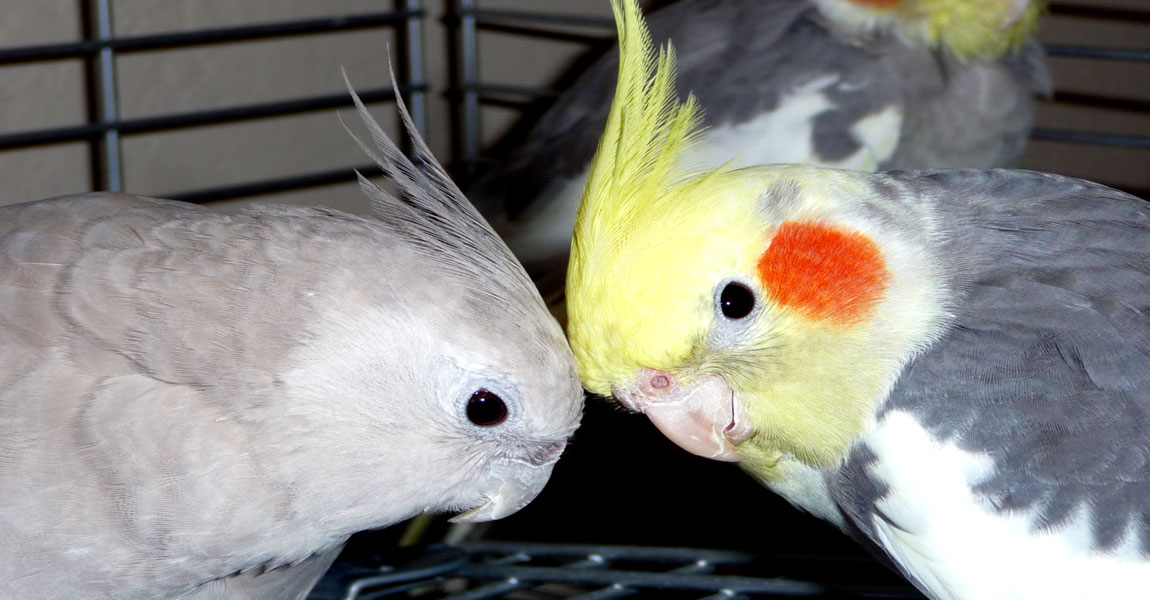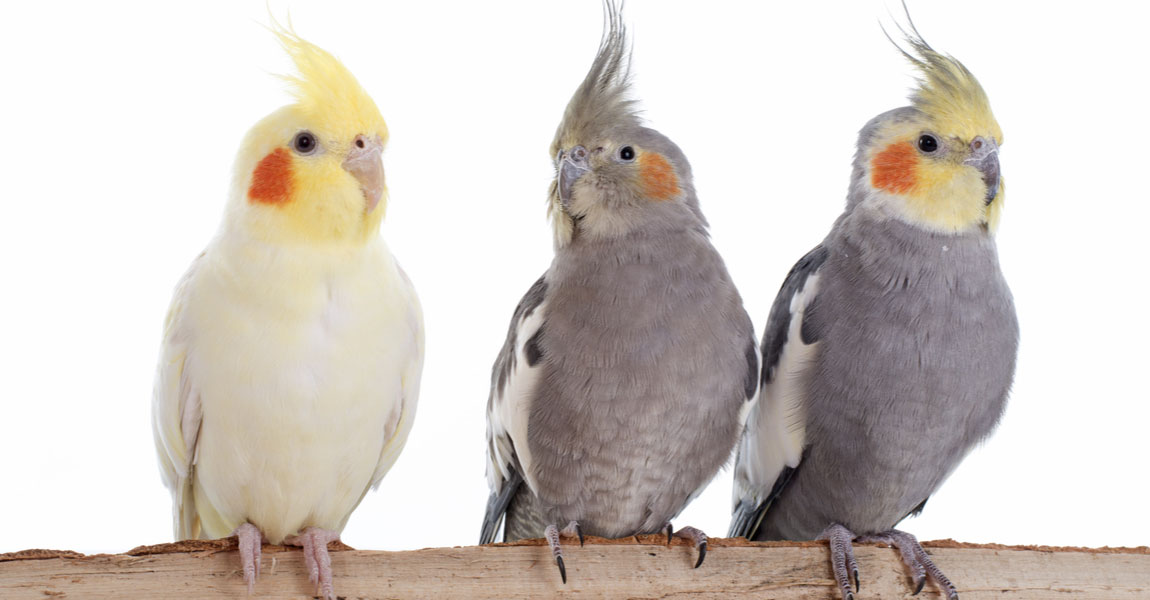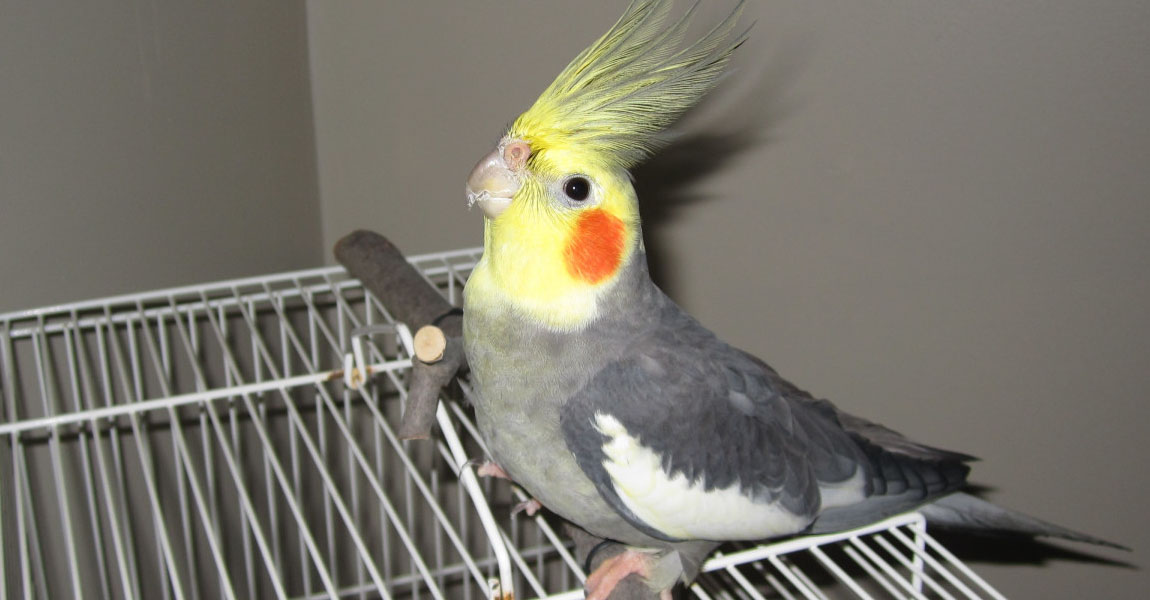With young cockatiels the male and female look the same so it is difficult to decipher their sex until they have been through their first molt at around six to nine months of age. Only then will the adult coloring show.
Normal gray cockatiels are easily sexed once the adult plumage is through. You will notice that the coloring is more defined with the male having a bright yellow face, whereas the female has a gray face with traces of pale yellow. The male's body is a dark gray but the females appears duller with almost a brown tint to the gray. Also, until their first molt both sexes have barring patterns on the underside of their tail feathers. After the molt the male's tail feathers will be a solid gray color with no barring, but the females will remain patterned.
Cockatiels do have a reputation for demanding attention of their owners on a regular basis. Their vocalizations range from soft cheeps to piercing cries.
The above is easily applied for normal gray cockatiels but other color varieties such as albinos, cinnamons, lutinos, pearls and pieds are more difficult to sex.
What to look for.
Use the general guide below to assist with the gender determination of other varieties:
- Males have a great vocal ability and whistle a lot.
- Females generally are fairly quiet.
- Males whistle and call, whereas females tend to screech.
- Females are often more likely to hiss and bite.
- Where applicable, males have slightly darker or brighter colorings on the face and orange cheek patches.
- Any hint of barring, markings or spots on the underside of the tail feathers or wings when they are spread indicates a female (you may need to hold your cockatiel up to a bright light in order to see any markings.
- Males tend to strut around - they lift their wings slightly, stick their chest out and parade and strut, normally calling at the same time.
- Place a mirror in front of your cockatiel. How does it react? Normally a male will be fascinated and the mirror should hold his attention for quite some time while he performs in front of it. A female tends to lose interest fairly quickly.
As always the information offered here is to provide guidance and is not intended to be a substitute for the good advice provided by your own avian vet. When in doubt always consult your own veterinarian.
Source: Cockatiel.com





